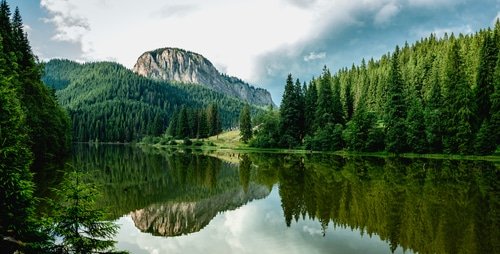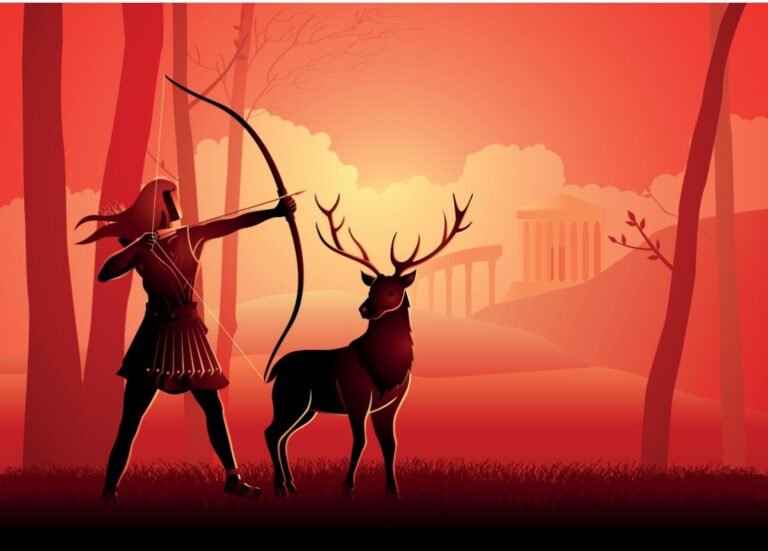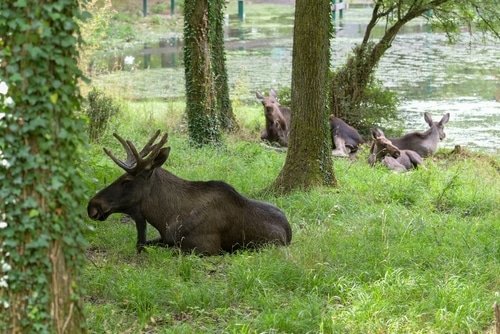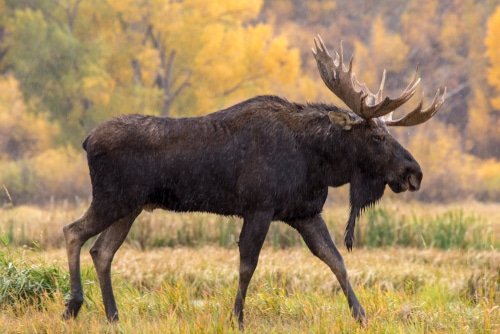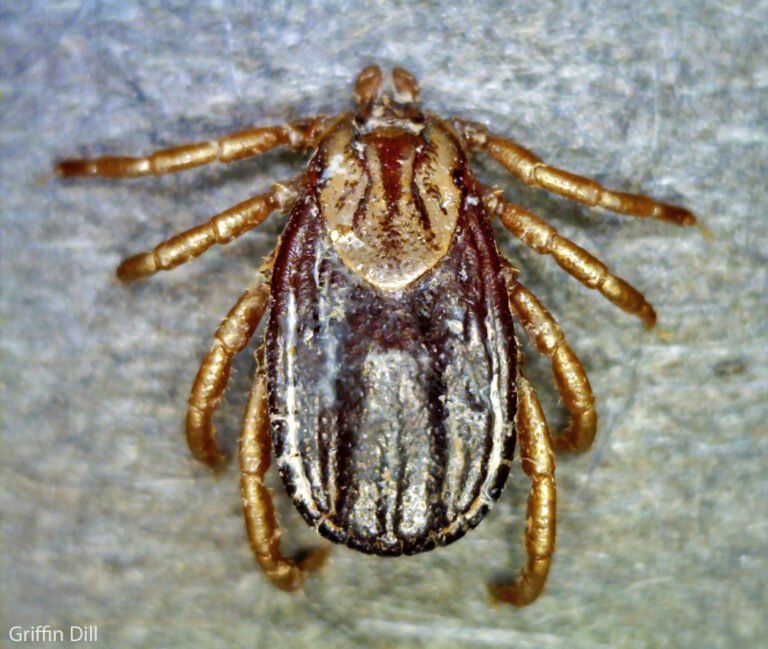Moose predators play a vital role in maintaining the delicate balance of ecosystems. These creatures, with their sharp instincts and primal hunting skills, help regulate populations of herbivores, such as moose, by keeping their numbers in check.
By preying on weaker or diseased individuals, predators improve the overall health and genetic diversity of prey populations. Their presence contributes to a healthier ecosystem where only the fittest survive.
Additionally, predation helps prevent overgrazing, which could lead to habitat degradation. Therefore, understanding the dynamics between moose and their natural threats is crucial for comprehending the intricacies of a functioning ecosystem.
Introduction to Moose as a Keystone Species
Moose hold a special place in our natural world as they are considered keystone species within many ecosystems they inhabit. A keystone species has disproportionate effects on its environment relative to its abundance. In other words, these majestic creatures have an outsized impact on their surroundings despite not being the most abundant animals in their habitat.
Moose play this role because they are massive herbivores that shape vegetation patterns through browsing activities. Their selective grazing habits impact plant growth and composition, which can have cascading effects on other organisms in the ecosystem, such as small mammals, birds, and even insects that rely on specific plant species for food or shelter.
Thus, any changes or disruptions involving moose populations can reverberate throughout ecosystems. By providing a comprehensive overview of predators’ significance and introducing moose as a keystone species, we can lay a solid foundation for understanding the complex interactions between these magnificent animals and those that hunt them.
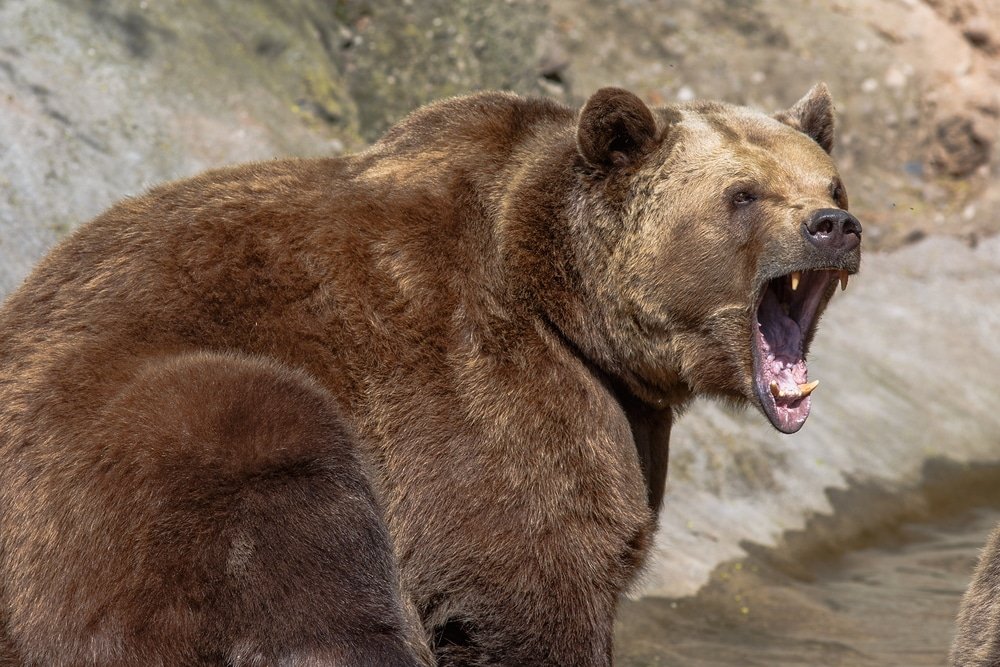
Bears (Grizzly and Black Bears)
Habitat preferences and hunting strategies
Regarding natural threats to moose, Grizzly, and Black bears are among the top contenders. These mighty creatures have distinct habitat preferences and hunting strategies that enable them to target moose easily. Grizzlies typically inhabit forested areas, while Black bears are more adaptable and often found in forests and open habitats.
Grizzlies possess immense strength and a remarkable ability to sniff out their prey from miles away. They rely on their powerful jaws and sharp claws to overpower moose, often ambushing them near water sources or during their feeding routines.
Black bears, on the other hand, display a more opportunistic approach by taking advantage of weakened or injured moose. They are known for their climbing skills, enabling them to reach young calves hidden in trees or escape into elevated areas if confronted.
Impact on moose populations and behavior
The presence of bears has a significant impact on both the population size and behavior of moose. Their predation can lead to changes in the age structure of moose populations as they often target vulnerable individuals such as calves or weakened adults. This selective pressure can alter the genetic composition of moose over time by favoring traits that aid in evading bear attacks.
Moreover, the fear of bear encounters influences moose behavior by making them more vigilant at all times. Moose avoid areas frequented by bears or adopt defensive behaviors like increased aggression when they sense a potential threat nearby.
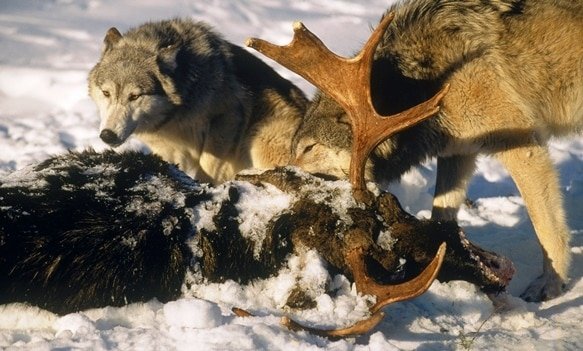
Wolves
Pack dynamics and hunting techniques
Wolves have perfected teamwork like no other animals that hunt moose. These highly intelligent predators operate in cohesive packs with well-defined hierarchies.
Pack dynamics play a crucial role in their hunting success; they often coordinate their efforts to take down large prey like moose. Wolves employ various hunting techniques, including pursuing the target until it becomes exhausted.
By continually harassing and nipping at the heels of a running moose, they tire it out, allowing for an easier takedown. Another strategy involves cornering the moose against natural barriers like rivers or cliffs, limiting its escape routes and making it more susceptible to attack.
Relationship between wolves and moose populations
The intricate relationship between wolves and moose populations is among the most well-studied predator-prey dynamics in nature. Wolves act as important regulators of moose numbers by preying primarily on individuals who are old, sickly, or weakened by other factors, such as harsh environmental conditions. Their predation can keep moose populations in check and prevent overgrazing, thus indirectly benefiting other plant and animal species within their ecosystem.
At times, this predator-prey relationship can exhibit a delicate balance where fluctuations in wolf numbers directly impact the density and distribution of moose populations. Understanding this dynamic is vital for effective management strategies to maintain healthy ecosystems.
Mountain Lions (Cougar)
Stealthy nature and solitary hunting style
Mountain lions, also known as cougars or pumas, possess remarkable stealth that allows them to stalk their prey with astonishing efficacy. They are solitary hunters who rely on stealth rather than strength when taking down large ungulates like moose.
Mountain lions often use their exceptional camouflage to blend seamlessly into their surroundings while silently closing in on unsuspecting prey. This silent approach gives them a distinct advantage over the keen senses of the moose; they can get within striking distance without raising any alarms.
Regional variations in predation rates
Predation rates by mountain lions vary across regions due to factors such as habitat suitability for both predators and prey, as well as the availability of alternative food sources. In areas where moose are abundant and other potential prey species are scarce, mountain lions may specialize in hunting them. However, in regions with an abundance of alternative prey like deer or elk, mountain lions may exhibit lower predation rates on moose.
Furthermore, variations in regional predator densities and habitat fragmentation can also influence the encounters between mountain lions and moose, further shaping predation rates. By understanding the distinct characteristics and strategies of bears, wolves, and mountain lions when hunting moose, we can gain valuable insights into the complex dynamics of predator-prey relationships within ecosystems.
These apex predators are crucial in regulating moose populations and shaping their behavior. The survival of such magnificent creatures is intertwined with maintaining a delicate balance between predator and prey. This balance ensures the long-term health and sustainability of our natural world.
Lesser-Known Predators of Moose
Coyotes: Opportunistic hunters and scavengers
Coyotes, known for their adaptability and cunning nature, are opportunistic predators that will take advantage of any available food source, including moose. While they primarily prey on smaller mammals like rodents and rabbits, they will readily scavenge on carcasses or target young or weakened moose when the opportunity presents itself. Coyotes are highly adaptable and have expanded their range across North America, bringing them closer to moose populations.
Lynx: Adaptations for hunting snowshoe hares, but occasionally preying on moose calves or sick individuals.
Lynx are well-known for their association with snowshoe hares as their primary prey. These elusive cats have evolved remarkable adaptations – long legs for deep snow travel, large paws to help them navigate the terrain, and tufted ears that enhance their hearing – enabling them to hunt effectively in boreal forests.
While they predominantly rely on hares as a food source, there have been instances where lynx have been observed preying on moose calves or sick individuals. However, these occurrences are relatively rare compared to other predators.
Unique Interactions with Predators
Human-Predator Interactions: Hunting practices and regulations
Humans play an important role in managing predator-prey interactions involving moose. Hunting practices and regulations are carefully implemented to maintain sustainable population levels while considering ecological balance. By managing hunting seasons and quotas carefully, authorities aim to prevent overexploitation of predator populations while ensuring that natural threats to moose do not become excessive.
Coexistence efforts to minimize conflicts
Efforts towards coexistence between humans and predators aim at minimizing conflicts that may arise due to shared habitats. Public awareness campaigns promote responsible behavior in predator-rich areas to avoid confrontations and reduce negative human-wildlife interactions. Implementing non-lethal deterrents, such as electric fencing and bear-resistant garbage bins, also helps minimize the chances of attracting predators into human settlements.
Predator-Prey Relationships: Behavioral adaptations of moose to avoid predators
Moose have developed various behavioral adaptations to mitigate the risk posed by their predators. They are excellent swimmers and will often take refuge in water bodies, using them as a means of escape from pursuing predators.
Additionally, moose can be highly vigilant animals with acute senses that allow them to detect approaching threats. They utilize their large size and formidable antlers for defense, occasionally engaging in aggressive behaviors toward predators.
Predation on the health and genetic diversity of moose populations
Predation plays a crucial role in shaping the health and genetic diversity of moose populations. By selectively targeting weaker or genetically inferior individuals, predators help maintain strong gene pools within moose populations. This natural selection process contributes to healthier overall populations by weeding out individuals prone to diseases or other physical weaknesses.
Conservation Efforts for Moose Predators
Research initiatives to understand predator-prey dynamics
Ongoing research initiatives focus on understanding the intricate dynamics between moose and their predators – such as studying population densities, hunting patterns, and prey preferences – to gain insights into how these relationships impact ecosystem balance. This knowledge allows conservationists and wildlife managers to decide about predator management strategies.
Conservation measures to protect predator populations
Recognizing the vital role that predators play in maintaining healthy ecosystems, conservation measures are implemented to protect predator populations. These efforts focus on preserving suitable habitats, enforcing anti-poaching laws, and promoting coexistence with human communities. By safeguarding predator populations, we enhance biodiversity and maintain the intricate ecological equilibrium that sustains our natural world.
Conclusion
Predators are indispensable in shaping ecosystems, regulating populations, and maintaining biodiversity. While moose face various natural threats from various predators, these interactions contribute to the overall health and stability of moose populations.
Conservation efforts that balance predator management with coexistence measures help foster a harmonious relationship between humans and wildlife. By understanding and valuing the significance of predators in ecosystem balance, we can work towards a future where moose and their predators thrive together in harmony.


